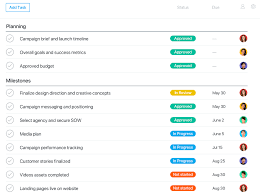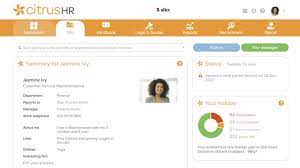Unlocking Success: The Evolution of Strategic Planning Software
The Power of Strategic Planning Software
In today’s fast-paced and competitive business environment, strategic planning is crucial for the success and growth of any organisation. Strategic planning software has emerged as a valuable tool that empowers businesses to streamline their strategic processes, align their goals, and make informed decisions based on data-driven insights.
Benefits of Strategic Planning Software
Strategic planning software offers a range of benefits that can significantly enhance the strategic planning process:
- Efficiency: By centralising all strategic planning activities in one platform, software eliminates the need for manual processes and spreadsheets, saving time and reducing errors.
- Collaboration: Teams can collaborate in real-time, share information, and work together towards common goals regardless of their physical location.
- Data Analysis: Software provides powerful analytics tools that enable businesses to analyse data trends, identify opportunities, and make informed decisions.
- Goal Alignment: With clear visibility into organisational goals and progress, teams can align their efforts to achieve strategic objectives effectively.
- Scenario Planning: Software allows businesses to simulate different scenarios, assess risks, and develop contingency plans to adapt to changing market conditions.
Choosing the Right Strategic Planning Software
When selecting strategic planning software for your organisation, consider the following factors:
- User-Friendly Interface: Look for software with an intuitive interface that is easy to navigate and use.
- Customisation Options: Choose software that allows you to tailor the tool to your specific needs and preferences.
- Data Security: Ensure that the software offers robust security features to protect sensitive business information.
- Integration Capabilities: Select software that can integrate with other tools and systems used within your organisation for seamless workflow.
- Suitability for Your Industry: Consider whether the software is designed to meet the unique requirements of your industry or sector.
In Conclusion
Strategic planning software is a valuable asset for businesses looking to enhance their strategic decision-making processes, improve collaboration among teams, and achieve long-term growth objectives. By leveraging the power of technology, organisations can stay agile in a rapidly evolving business landscape and drive sustainable success.
Key Considerations for Selecting and Implementing Strategic Planning Software
- Ensure the software aligns with your organisation’s goals and objectives.
- Choose a user-friendly platform that can be easily adopted by your team.
- Look for features that allow for collaboration and communication among team members.
- Consider scalability to accommodate future growth and changes in your organisation.
- Regularly review and update the strategic plan within the software to ensure relevance.
- Provide adequate training and support to users to maximise the benefits of the software.
Ensure the software aligns with your organisation’s goals and objectives.
When considering strategic planning software for your organisation, it is essential to ensure that the chosen software aligns seamlessly with your company’s goals and objectives. By selecting software that is tailored to meet the specific needs and strategic direction of your organisation, you can maximise the effectiveness of your planning processes. This alignment ensures that every feature and functionality of the software contributes directly to advancing your business objectives, enabling you to make informed decisions that drive growth and success.
Choose a user-friendly platform that can be easily adopted by your team.
When considering strategic planning software, it is essential to select a user-friendly platform that can be seamlessly adopted by your team. An intuitive interface and easy navigation are key factors in ensuring that all team members can quickly grasp the software’s functionalities and incorporate it into their workflow with minimal training. By choosing a user-friendly platform, you can enhance collaboration, increase productivity, and empower your team to effectively contribute to the strategic planning process.
Look for features that allow for collaboration and communication among team members.
When considering strategic planning software, it is essential to prioritise features that facilitate collaboration and communication among team members. The ability for teams to work together seamlessly, share insights, and align their efforts towards common goals is paramount in driving successful strategic initiatives. Look for software that offers robust collaboration tools, real-time communication channels, and the capability to centralise discussions and decision-making processes. By fostering a collaborative environment within the software platform, organisations can enhance teamwork, boost productivity, and achieve strategic objectives more effectively.
Consider scalability to accommodate future growth and changes in your organisation.
When evaluating strategic planning software, it is essential to consider scalability to accommodate future growth and changes within your organisation. Opting for software that can scale alongside your business ensures that you can seamlessly adapt to evolving needs, expand operations, and incorporate new strategies without facing limitations. Scalability enables your organisation to maintain efficiency and effectiveness as it grows, providing the flexibility needed to thrive in a dynamic business environment. By prioritising scalability in your choice of strategic planning software, you set the foundation for sustainable growth and long-term success.
Regularly review and update the strategic plan within the software to ensure relevance.
It is essential to regularly review and update the strategic plan within the strategic planning software to maintain its relevance and effectiveness. By revisiting the plan at scheduled intervals, businesses can assess progress, identify any shifts in priorities or market conditions, and make necessary adjustments to stay aligned with their goals. This proactive approach ensures that the strategic plan remains dynamic and responsive to changing circumstances, enabling organisations to adapt swiftly and make informed decisions for sustained success.
Provide adequate training and support to users to maximise the benefits of the software.
To maximise the benefits of strategic planning software, it is essential to provide adequate training and support to users. Offering comprehensive training sessions and ongoing support helps users fully understand the capabilities of the software, enabling them to utilise its features effectively in their strategic planning processes. By investing in user training and support, organisations can ensure that their teams are equipped with the knowledge and skills needed to optimise the software’s potential, leading to improved collaboration, efficiency, and decision-making within the organisation.











